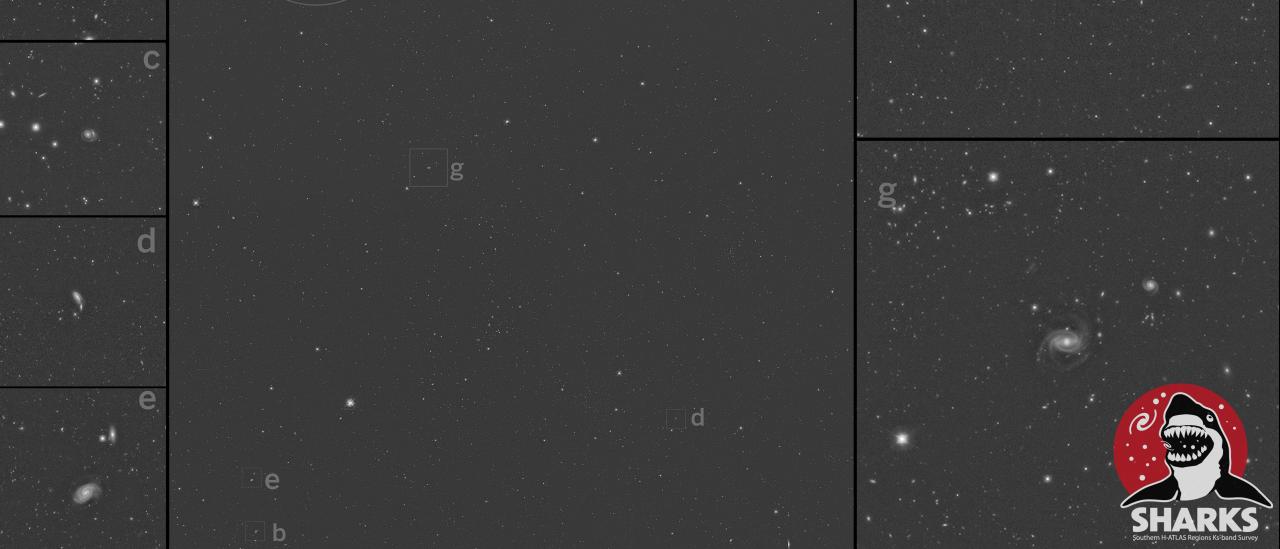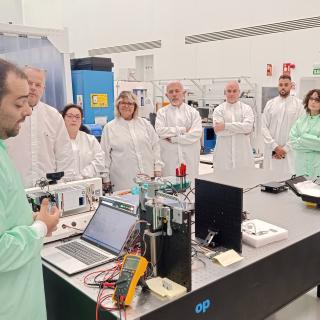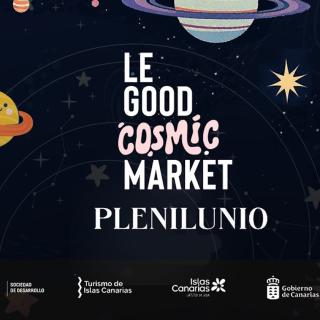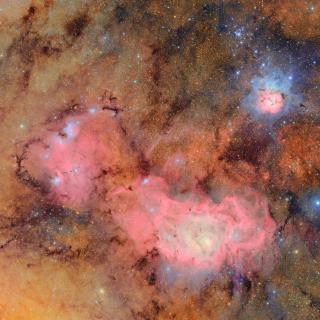The first data release of the SHARKS public survey, led by researchers at the Instituto de Astrofísica de Canarias (IAC), was provided to the astrophysical community today. This project, which has reached its first milestone, uses the 4-metre VISTA telescope of the European Southern Observatory (ESO) in Chile to map large portions of the sky in the near-infrared, a range of the spectrum invisible to the human eye.
The near-infrared wavelength range, a type of light imperceptible to the human eye, allows us to explore regions of the Universe that are obscured by cosmic dust or are too cold to be studied with telescopes observing in the visible. With the program Southern H-ATLAS Regions Ks-band Survey (SHARKS) an international team led by the Instituto de Astrofísica de Canarias (IAC) researcher Helmut Dannerbauer is making observations at 2 micrometres in this range of the spectrum with the VIRCAM camera at the ESO 4 m VISTA telescope located at Chile
This public survey, the first ESO survey led by a Spanish institution, has been awarded 1,200 hours to observe different regions of the sky (mainly in the southern hemisphere) to complete an area of 300 square degrees (equivalent to 1,200 full moons). A large range of scientific topics can be addressed with this dataset such as ultracool dwarfs in our own galaxy, galaxies at different distances, quasars and the largest structures in the universe.
The observed regions are part of the widest extragalactic survey Herschel Astrophysical Terahertz Large Area Survey (H-ATLAS), conducted with the infrared space satellite Herschel a decade ago. “Thanks to SHARKS we will now be able to reveal the nature of heavily dust obscured galaxies previously discovered by Herschel”, says Dannerbauer.
In this first data release, 20 square degrees of the data have been provided today to the scientific community via the ESO database. The release contains both calibrated images and source catalogues. In fact, more than 1.5 million sources have been detected. The released data can be immediately exploited by researchers world-wide. At least, two further data releases are planned in the next years.
The reduction and calibration of the data was carried out in close collaboration between the IAC and the Wide-Field Astronomy Unit (WFAU) at the Royal Observatory of Edinburgh. This effort was led by IAC postdoctoral researcher Aurelio Carnero Rosell, who explains that “as the emission from our atmosphere is the dominating light source in the taken images at the telescope, special care has to be taken when subtracting the background and thus revealing the near-infrared sources correctly.”
The SHARKS fields have been and will be observed with current and future telescope facilities and space missions and “therefore will have a large legacy value for the proper multi-wavelength studies of astrophysical objects in the next decade”, emphasizes Carlos Gutiérrez, core member of SHARKS and researcher at the IAC.
Currently, at IAC a number of researchers have started to exploit the SHARKS dataset with different scientific interests. A focus of the IAC team will be on the search for galaxy clusters in formation in order to study the evolution of the most massive structures. One of the members, Emmanuel Ríos, postdoctoral researcher at the IAC and funded by the government of the Canary Islands, adds, “I am excited to use SHARKS data, for example, in order to study the activity and evolution of black holes in the universe”.
SHARKS website:
http://research.iac.es/proyecto/sharks/pages/en/home.php
ESO public survey projects:
https://www.eso.org/sci/observing/PublicSurveys/sciencePublicSurveys.html
Access to data release:
http://archive.eso.org/cms.html
http://research.iac.es/proyecto/sharks/pages/en/data-releases/dr1.php
Contact at the IAC:
Helmut Dannerbauer, helmut [at] iac.es (helmut[at]iac[dot]es)
Aurelio Carnero Rosell, aurelio.carnero [at] iac.es (aurelio[dot]carnero[at]iac[dot]es)




